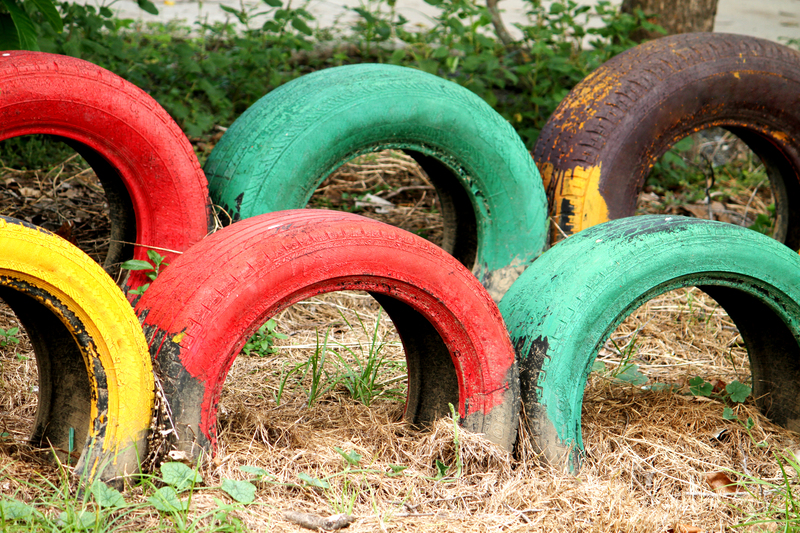Guidelines to Give Your Old Clothes a New Life
Are your closets overflowing with worn-out garments, outdated styles, or clothes you simply no longer wear? Instead of tossing them out or letting them gather dust, why not explore creative and eco-friendly solutions to revitalize your old clothes? By giving your old clothes a new life, you not only reduce waste but also promote sustainability and refresh your wardrobe in exciting ways. Below you'll find a comprehensive guide packed with practical tips and ingenious ideas to help you transform tired textiles into treasured pieces once again.

Why Revamp Your Old Clothes?
Sustainable fashion is no longer just a trend; it's a vital movement. On average, millions of tons of textiles end up in landfills each year. By repurposing old clothes, you can:
- Protect the environment by cutting down on textile waste and carbon emissions.
- Save money by extending the lifespan of your clothing rather than purchasing new items.
- Unleash your creativity and develop personal style through unique DIY projects.
- Support ethical fashion and avoid contributing to the fast-fashion industry's negative impact.
Below we'll share multiple effective ways to breathe new life into your old wardrobe. Each method is customizable and friendly for beginners or experienced DIY enthusiasts.
Creative Guidelines to Upcycle Old Fashion Pieces
1. Start with a Wardrobe Audit
Before you can give your old clothes a new life, assess which items are worth saving, refashioning, or donating. Dedicate an afternoon to sorting your clothes into these piles:
- Fixable: Items with small tears, loose buttons, or outdated styles that could easily be altered.
- Creatively Alterable: Pieces with unique fabrics or patterns that inspire creativity.
- Unsavable: Irreparably damaged garments that may be reused as rags or in craft projects.
This process helps you decide which old clothes to refresh and which to repurpose in other ways.
2. Mend and Repair - The Basics
- Patchwork: Cover holes or stains by sewing decorative patches or embroideries onto jeans, jackets, or bags.
- Replace Missing Buttons: Upgrade old shirts or coats with unique or colorful buttons to give them a brand-new look.
- Fix Zippers and Seams: Simple repairs like re-stitching seams or replacing zippers can revive clothing you thought was unusable.
Sometimes, a basic repair is all it takes to extend the life of your clothing.
3. Dye, Paint, & Print: Infuse Color and Personality
- Dye and Tie-Dye: Use fabric dyes to breathe fresh color into faded t-shirts, dresses, or jeans. Tie-dye techniques create colorful, unique patterns.
- Fabric Paints: Design trendy motifs, quotes, or personalize items with fabric paints or markers.
- Stencil Art: Use stencils to apply repeatable designs on plain fabrics for a fashionable update.
These techniques allow you to give your worn-out clothes a vibrant new appearance.
4. Transform Garment Function
Sometimes, the best way to give your old clothes a fresh life is to completely change how you use them:
- Pants into Shorts: Cut old jeans or trousers above the knee to turn them into trendy shorts. Hem the edges for a polished look or leave them frayed for a casual vibe.
- T-shirts into Crop Tops: Crop oversized tees or tanks and use leftover fabric as headbands, cleaning rags, or patchwork.
- Dresses into Skirts or Tops: Shorten old dresses to make stylish skirts or cut the bodice to create separate tops.
- Scarves from Sweaters: Repurpose soft, damaged sweaters into cozy winter scarves.
These creative transformations are not only practical but also keep your wardrobe dynamic and fun.
5. Custom Embellishments and Decorative Additions
Upgrade plain or outdated pieces using embellishments:
- Iron-on Patches, Sequins, or Studs: Affix dazzling patches, fabric flowers, or rhinestones to jeans, jackets, or backpacks to modernize their look.
- Lace Trims: Add lace to necklines, sleeves, or hemlines for a feminine, boho touch.
- Fabric Appliques: Stitch on contrasting fabrics to add interest and dimension to plain tops or bags.
- Beading and Embroidery: Try hand-embroidery or beading for a personalized, artisanal effect.
Accessorizing in this way gives your old clothes a creative edge they never had before.
6. Layering & Styling Tricks
- Layering: Wear older items under newer statement pieces for a trendy, layered look.
- Belt It: Add a belt to oversized dresses or tops for a modern, cinched silhouette.
- Accessorize: Pair plain items with bold accessories--a statement necklace or scarf can completely transform an outfit.
Experimenting with how you style your old items is an instant way to refresh your wardrobe without sewing a stitch.
7. Upcycle Into Home Goods or Accessories
If you don't see yourself wearing certain items anymore, consider transforming them into useful home products or accessories:
- Tote Bags: T-shirts and sweatshirts can be made into reusable grocery bags.
- Quilts or Patchwork Blankets: Collect fabric scraps from different garments to sew a one-of-a-kind quilt or throw.
- Pillows and Cushion Covers: Funky shirts or dresses with cool prints make unique pillowcases.
- Hair Accessories: Scrunchies, headbands, or hair ties can be easily crafted from leftover fabric.
- Pet Accessories: Use durable cotton for pet beds, toys, or bandanas.
Refashioning old clothes into household items is a fantastic way to minimize waste while personalizing your space.
Guiding Principles for Sustainable Clothing Revival
1. Quality Over Quantity
Focus your upcycling efforts on garments made of durable materials. High-quality cotton, linen, wool, and denim last longer through repeated transformations.
2. Use the Right Tools
- Sewing kit with needles, threads, pins, and scissors
- Fabric glue or no-sew adhesive for those who prefer not to sew
- Basic embellishments like patches, trims, and buttons
- Dye, paints, or stencils if planning on coloring/printing
Having a simple tool kit makes revamping old clothes easy and enjoyable.
3. Experiment and Have Fun
Every project is a chance to learn and express yourself! Embrace imperfections and let your personality shine through your DIY creations. Remember, your upcycled clothes are one-of-a-kind.
Where to Find Inspiration for Clothing Upcycles
- YouTube tutorials: Step-by-step guides for beginners and advanced sewers alike.
- Pinterest boards: Visual inspiration for styles, patterns, and color palettes.
- Thrift shops: Check out upcycled items for new ideas and see what sells well.
- Instagram DIYers: Follow makers who showcase their clothing transformations.
- Fashion magazines and blogs: Spot emerging revamp trends, from patchwork to re-sizing oversized blazers.
Eco-Friendly Disposal: What to Do With Clothes You Can't Use
- Donate: Many charities, shelters, and organizations accept gently used clothing. Ensure items are clean and in good condition.
- Textile recycling: Some cities offer textile recycling bins. Brands like H&M and Levi's collect old textiles for recycling.
- Clothing swaps: Host or join swaps with friends, family, or your community.
Responsibly disposing of unneeded garments is as important as upcycling; it extends the life of your clothing within the community and reduces overall waste.

Benefits of Upcycling and Refashioning Old Clothes
- Reduces Textile Waste: Millions of tonnes of clothing land in landfills annually. Upcycling curbs this problem.
- Saves Money: Transforming what you own means less spending on new items.
- Self-Expression: Personalized alterations make your clothing truly unique.
- Supports Environmental Causes: Less demand for new clothing means lower energy and resource consumption.
- Teaches Valuable Skills: Sewing, dyeing, and crafting are lifelong skills that also relieve stress and spur creativity.
Conclusion: Your Journey to a Sustainable, Stylish Wardrobe Starts Today
With these guidelines to give your old clothes a new life, you're empowered to reduce fashion waste, save money, and express your style in creative, eco-conscious ways. Whether through simple repairs, bold dye jobs, or complete fashion makeovers, each project brings you closer to a more sustainable lifestyle.
Start with one piece today: raid your closet, pick an item, and imagine its possibilities. Not only will you develop valuable, enjoyable skills, but you'll also contribute positively to the world around you. Your clothes--and the planet--will thank you!
Frequently Asked Questions
- What are the simplest ways to upcycle old clothes?
Hemming pants, sewing on buttons, using fabric paint, and turning t-shirts into bags are among the easiest options for beginners. - Is it cost-effective to revamp your old clothes?
Absolutely! Most projects require minimal investments and you save money by not buying new items. - What do I need to start upcycling?
Basic sewing supplies, creativity, and some online tutorials can help you get started.
If you're ready to make a difference while revamping your wardrobe, follow these inspiring guidelines for giving your old clothes a second life.